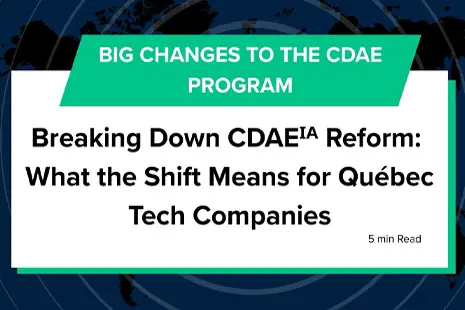Tech hubs in the United States are facing something of an identity crisis, as the traditional centers-of-gravity have lost some pull when it comes to cultivating in-demand tech talent, while smaller or emerging metro areas are seeing fresh interest.
This is according to research from the Burning Glass Institute, whose ranking of The Most Cutting-Edge Cities in the United States features some familiar zip codes (ie. San Francisco and the Bay Area) as well as metros that haven’t historically been known for their high-tech bona fides (ie. Miami, Kansas City, Pittsburgh).
Coming out on top was Seattle, which ranked #1 for both Cutting-Edge Skills and Momentum, stealing the top spot in The Most Cutting-Edge Large Cities (Metro Areas) ranking for 2023.
It’s important to bear in mind how the 10 cities in the primary Most Cutting-Edge Large Cities list compared to the cities who topped in the Momentum ranking, as it shows just how much previous assumptions about innovation hubs are rapidly shifting. While Seattle, San Francisco and San Jose hold the top spots in both rankings, for instance, the rest of the placements are far less uniform.
Take Boston: While the city holds a strong ranking at 4 in the larger Cutting-Edge Skills ranking, it’s only ranked 7 in terms of Momentum, with Austin, Pittsburgh and Kansas City edging out Beantown in the ladder ranking.
Similarly, the Momentum ranking for San Diego (13), New York City (9) and Portland, Oregon (16) metros don’t align with their current places in the primary Cutting-Edge Skills list, indicating that top skills are far less centralized among the traditional coastal hub markets than in the past.
The Most Cutting-Edge Large Cities (Metro Areas) are as follows:
| METRO AREA | CUTTING-EDGE SKILLS RANK | MOMENTUM RANK |
| Seattle-Tacoma-Bellevue, Wash. | 1 | 1 |
| San Jose-Sunnyvale-Santa Clara, Calif. | 2 | 2 |
| San Francisco-Oakland-Berkeley, Calif. | 3 | 3 |
| Boston-Cambridge-Newton, Mass./N.H. | 4 | 7 |
| Austin-Round Rock-Georgetown, Texas | 5 | 4 |
| San Diego-Chula Vista-Carlsbad, Calif. | 6 | 13 |
| New York-Newark-Jersey City, N.Y./N.J./Pa. | 7 | 9 |
| Los Angeles-Long Beach-Anaheim, Calif. | 8 | 8 |
| Portland-Vancouver-Hillsboro, Ore./Wash. | 9 | 16 |
| Raleigh-Cary, N.C. | 10 | 21 |
Innovation outside traditional tech
A big reason so much tech talent is popping up in unexpected corners of the country is because tech talent is more broadly in demand across sectors. While new businesses are still springing up in emerging fields like artificial intelligence and machine learning, legacy—or even historically tech-averse—companies are now vying for many of the same skill sets as cutting-edge newcomers.
For instance, many of the markets that are seeing momentum aren’t necessarily hubs for VC investment or startup growth, but areas where traditional industries are being transformed—calling for a new generation of skilled workers to step in.
In Utah, where Provo and Salt Lake City ranked 1 and 3 (respectively) for medium-sized cities in the talent rankings, a large share of new Cutting Edge hires are being cultivated out of a tech campus established in the state by Zions Bancorp in 2022.
Similarly, new tech investments from WalMart help tell the story of why Fayetteville, Arkansas, ranks second in the medium-sized cities list and first in the Momentum ranking for metros in this population bracket.
“Increasingly you’re seeing that Main Street is becoming tech, Main Street is being driven by data,” Matt Sigelman, president of the Burning Glass Institute, told the Wall Street Journal. “Some of these frontier skills that are growing the fastest and are commanding the highest value show up in places where you wouldn’t have seen them in the past.”
A more decentralized startup ecosystem
Along with tech talent finding careers in fields that had traditionally been tech averse, there are also efforts at the federal level to support new businesses and innovation in corners of the country that haven’t always received support.
As we outlined recently on the blog, the U.S. Commerce Department recently unveiled 31 regional Tech Hubs that will be the recipients of significant funding as part of the CHIPS and Science Act, which was passed last summer.
The new funding will focus on providing transformative investments in innovation, supply chain resilience, and job creation by bringing together stakeholders across the private and public sector to compete for up to $75 million in implementation grants.
While public-private partnerships that combine government funding, private investment and even institutional resources are key for bolstering local tech ecosystems, individual entrepreneurs need to follow a similar capital strategy when it comes to funding their venture.
That means leveraging funding from an array of sources that allow you to capture growth, maintain equity in your business, and fund your research and development.
At Boast, we’ve worked with thousands of startups across North America to capture non-dilutive funding to help fuel their product roadmap and enhance their R&D. Along with insights into available tax credits, our platform combines key financial and project tracking systems into a single source of intelligence, giving you the insight you need to optimize strategies and capitalize on the innovation your team is driving.
To learn more about the R&D tax credits offered by the U.S. government and how your can leverage them to fuel your product runway, download our Guide:

Reach out to an expert today to learn more about Boast’s unique approach to optimizing R&D and maximizing non-dilutive funding.


